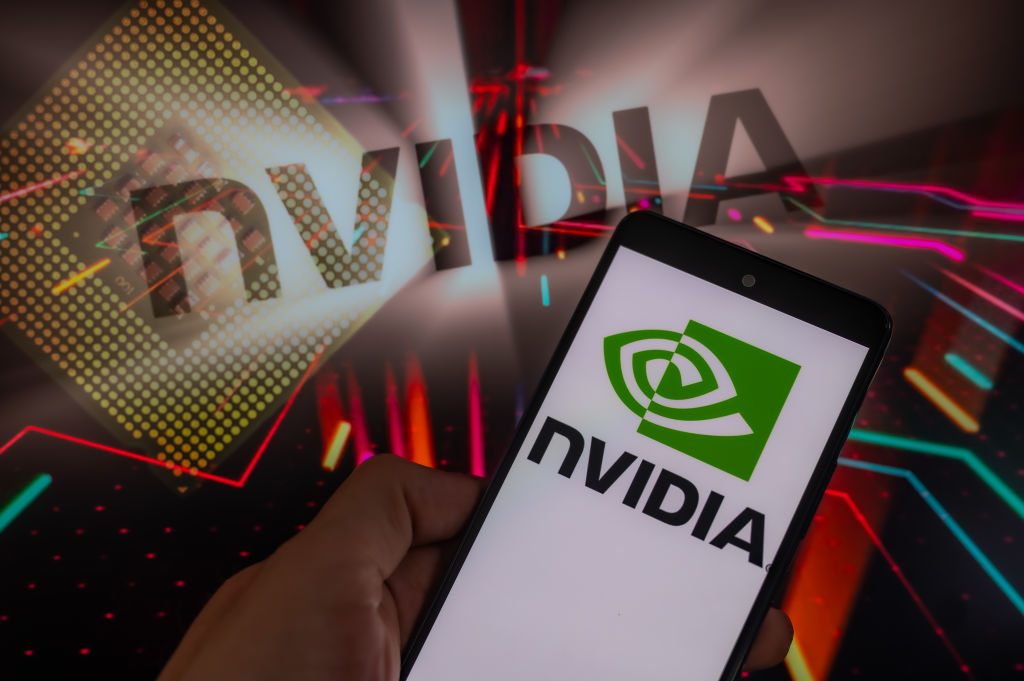
Jensen Huang, CEO of Nvidia, recently concluded a pivotal visit to South Korea, his first in 15 years, signaling a profound strategic pivot for both the global AI hardware leader and the East Asian technology powerhouse. His presence underscored a series of sweeping collaborations designed to significantly bolster South Korea’s artificial intelligence infrastructure and propel its capabilities in "physical AI." These ambitious partnerships, unveiled during the APEC Summit 2025, span critical sectors from advanced manufacturing and telecommunications to autonomous mobility and cloud services, uniting Nvidia with major Korean conglomerates including Samsung, Hyundai Motor Group, SK Group, and Naver.
A Strategic Alliance Amidst Global Tech Shifts
This announcement arrives on the heels of broader diplomatic and technological agreements between the United States, Japan, and South Korea, aimed at fortifying strategic ties and fostering cooperation in burgeoning fields such as AI, semiconductors, quantum computing, biotechnology, and 6G. The confluence of these events highlights a concerted effort to establish robust supply chains and innovation ecosystems resilient to geopolitical pressures, while accelerating the development of next-generation technologies. For South Korea, a nation historically dependent on export-driven manufacturing and deeply integrated into global supply chains, securing its position at the forefront of the AI revolution is not merely an economic aspiration but a national imperative.
The South Korean government has committed to acquiring over 260,000 of Nvidia’s cutting-edge Graphics Processing Units (GPUs) to meet the escalating demands of its burgeoning AI ecosystem. A substantial portion, approximately 50,000 GPUs, will be allocated to public initiatives, including the development of indigenous AI foundation models and the establishment of a national AI data center. The vast majority, exceeding 200,000 GPUs, are earmarked for private sector deployment, distributed among titans like Samsung, SK, Hyundai Motor Group, and Naver. This allocation is intended to catalyze AI-driven manufacturing innovation and accelerate the creation of specialized AI models tailored for various industries, from automotive to telecommunications.
Nvidia’s Ascendancy and South Korea’s Tech Prowess
Nvidia’s journey from a niche graphics card manufacturer to the undisputed leader in AI computing is a testament to its foresight and continuous innovation. Founded in 1993, the company initially revolutionized the gaming industry with its powerful GPUs. However, it was the realization in the early 2000s that GPUs could perform parallel processing tasks far more efficiently than traditional CPUs for complex computations that set the stage for its AI dominance. The introduction of CUDA (Compute Unified Device Architecture) in 2006, a platform that allowed developers to program Nvidia GPUs for general-purpose computing, democratized access to parallel processing, making GPUs indispensable for machine learning and, subsequently, the AI boom. Today, Nvidia’s GPUs, like the H100 and the newer Blackwell architecture, are the fundamental building blocks of AI models, from large language models to autonomous systems, effectively making Nvidia the "picks and shovels" provider in the AI gold rush.
South Korea, on the other hand, has carved out its reputation as a global technology leader through relentless investment in R&D, a highly skilled workforce, and the formidable capabilities of its "chaebols" – large, family-controlled conglomerates. From Samsung’s global leadership in semiconductors and consumer electronics to Hyundai’s automotive innovations and SK’s diverse ventures in energy and telecom, these companies have consistently pushed the boundaries of technological advancement. The nation’s strategic focus has recently shifted towards emerging technologies like AI, 5G/6G, and quantum computing, aiming to reduce reliance on external intellectual property and foster domestic innovation. The current collaborations with Nvidia are a direct reflection of this national strategy to embed AI deeply into its industrial fabric.
Samsung’s AI Mega-Factory and 6G Frontiers
Samsung, a long-standing partner with Nvidia for over two decades, is taking a monumental leap into the era of intelligent manufacturing. The Korean tech giant announced plans to construct an "AI mega-factory" in collaboration with Nvidia, a facility designed to integrate AI into every stage of its vast manufacturing operations, encompassing semiconductors, mobile devices, and robotics. This ambitious project will leverage more than 50,000 Nvidia GPUs, integrated with Nvidia’s Omniverse platform, to create an intelligent network capable of real-time analysis, prediction, and optimization of production processes. This represents a significant stride towards Industry 4.0, where digital twins and AI-driven insights will streamline complex manufacturing workflows, enhance efficiency, and minimize waste.
Beyond manufacturing, the two giants are also spearheading advancements in memory technology, collaborating on High Bandwidth Memory 4 (HBM4), the next generation of high-performance memory crucial for powering future AI applications. HBM technology stacks multiple memory dies on top of each other, providing significantly higher bandwidth and lower power consumption compared to traditional DRAM, making it indispensable for AI accelerators that demand massive data throughput. Samsung’s expertise in memory fabrication, combined with Nvidia’s GPU architecture, promises to unlock new levels of AI performance.
Furthermore, Samsung is joining forces with Nvidia, alongside South Korea’s three major telecom operators—SK Telecom, KT, and LG Uplus—and the Electronics and Telecommunications Research Institute (ETRI), to co-develop AI-RAN. This innovative concept merges mobile base stations with artificial intelligence to dramatically boost network performance, reduce energy consumption, and pave the way for the ultra-low latency and high-capacity demands of 6G networks. Under the new agreement, this consortium will collectively develop next-generation AI-RAN technologies and establish a global testbed, solidifying South Korea’s leadership in future telecommunications infrastructure. The foundational work in AI-RAN is also complemented by Samsung Foundry’s commitment to manufacturing custom CPUs and XPUs for Nvidia, extending their strategic partnership in semiconductor fabrication.
Hyundai Drives Future Mobility with AI Factories
Hyundai Motor Group is positioning itself at the vanguard of the autonomous mobility revolution through its expanded partnership with Nvidia. The collaboration focuses on building robust AI infrastructure and advancing "physical AI" technologies across autonomous mobility, smart factories, and advanced robotics. This partnership is characterized by a significant investment in high-performance GPU supply and joint research initiatives.
Hyundai plans to deploy 50,000 NVIDIA Blackwell GPUs for integrated AI model training, validation, and deployment, which is critical for the sophisticated algorithms required for self-driving cars and intelligent robotic systems. These GPUs will form the backbone of AI research centers established in South Korea, dedicated to strengthening the nation’s physical AI industry. As Jensen Huang articulated, "AI is revolutionizing every facet of every industry, and in transportation alone — from vehicle design and manufacturing to robotics and autonomous driving — Nvidia’s AI and computing platforms are transforming how the world moves." He emphasized that this collaboration with Hyundai, a global mobility solutions provider, is building intelligent cars and factories that will shape the future of the multi-trillion-dollar mobility sector. This strategic alliance aims not just to enhance vehicle capabilities but to rethink the entire automotive value chain, from design and production to post-sale services, all powered by AI.
SK and Naver: Cloud, Enterprise AI, and Digital Worlds
SK Group, the parent company of memory giant SK Hynix, is embarking on an ambitious venture with Nvidia to construct Asia’s first enterprise-led manufacturing AI cloud. This platform will harness Nvidia’s advanced simulation and digital twin technologies, providing critical AI infrastructure and services to the government, public institutions, and domestic startups. By democratizing access to high-performance AI computing and sophisticated simulation tools, SK Group aims to foster a vibrant AI ecosystem within South Korea, accelerating innovation across diverse industries. This initiative could significantly lower the barrier to entry for smaller enterprises and startups looking to integrate AI into their operations, thereby boosting national competitiveness.
Naver Cloud, the cloud computing arm of South Korean internet behemoth Naver, is also collaborating with Nvidia to develop a next-generation "Physical AI" platform. This platform is designed to bridge the gap between the digital and physical worlds, enabling AI to interact directly with real-world industrial environments and systems. Naver intends to deploy this AI infrastructure across key sectors including semiconductors, shipbuilding, energy, and biotechnology. The goal is to accelerate the adoption of AI solutions specifically optimized for the complex and dynamic requirements of real-world industrial applications. Hae-jin Lee, founder of Naver, highlighted this paradigm shift, stating, "Just as the automotive industry is transitioning to SDVs [Software-Defined Vehicles], the era of ‘Physical AI,’ where AI operates directly within real industrial sites and systems, is unfolding." This vision extends AI beyond virtual data processing into tangible, operational control and optimization, potentially revolutionizing how industries function.
Broader Implications and Market Impact
These extensive collaborations between Nvidia and South Korea’s tech giants signify a critical inflection point in the global AI landscape. They highlight a broader trend towards the deep integration of AI into every layer of hardware and software across industries. This strategic convergence of global tech leaders is not merely about incremental improvements but about fundamentally reshaping the next generation of intelligent systems and industrial processes.
For South Korea, these partnerships represent a robust strategy to maintain its competitive edge in the global technology race. By securing access to Nvidia’s leading-edge AI accelerators and platforms, and by embedding AI into its core industries, the nation aims to drive economic growth, enhance productivity, and foster domestic technological sovereignty. The investment in domestic AI foundation models and research centers also underscores a commitment to cultivating homegrown talent and intellectual property, reducing reliance on foreign AI ecosystems.
Globally, these deals reinforce Nvidia’s near-monopoly position in the high-performance AI chip market. Jensen Huang’s efforts to expand partnerships and diversify applications of Nvidia’s technology, even as he seeks to downplay concerns about an "AI bubble," reflect a confident assertion of market leadership. The sheer scale and strategic nature of these collaborations, coupled with a wave of other recent partnerships announced by Nvidia with companies like Eli Lilly, Palantir, Uber, and Joby Aviation, and even the U.S. Department of Energy, demonstrate the pervasive influence of AI across nearly all sectors. This broader narrative has fueled an unprecedented surge in Nvidia’s market capitalization, which recently surpassed $5 trillion, making it the first publicly traded company to reach this valuation. The alliances forged in South Korea are a vivid illustration of how this AI revolution is being built, one strategic partnership and hundreds of thousands of GPUs at a time.





